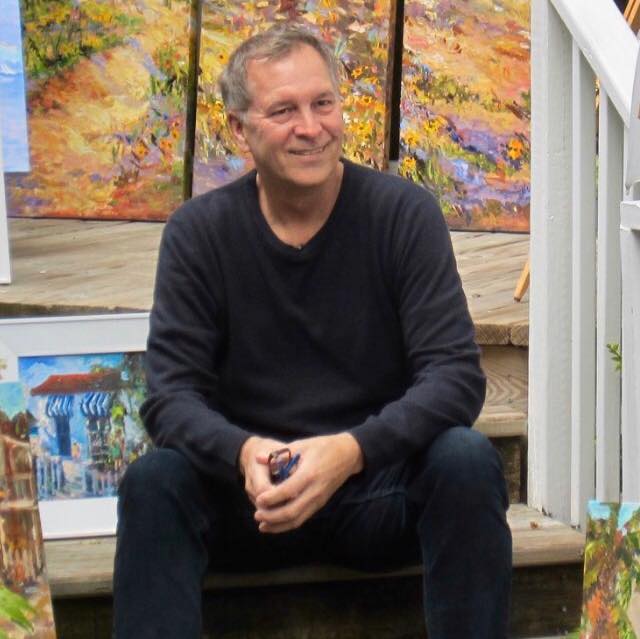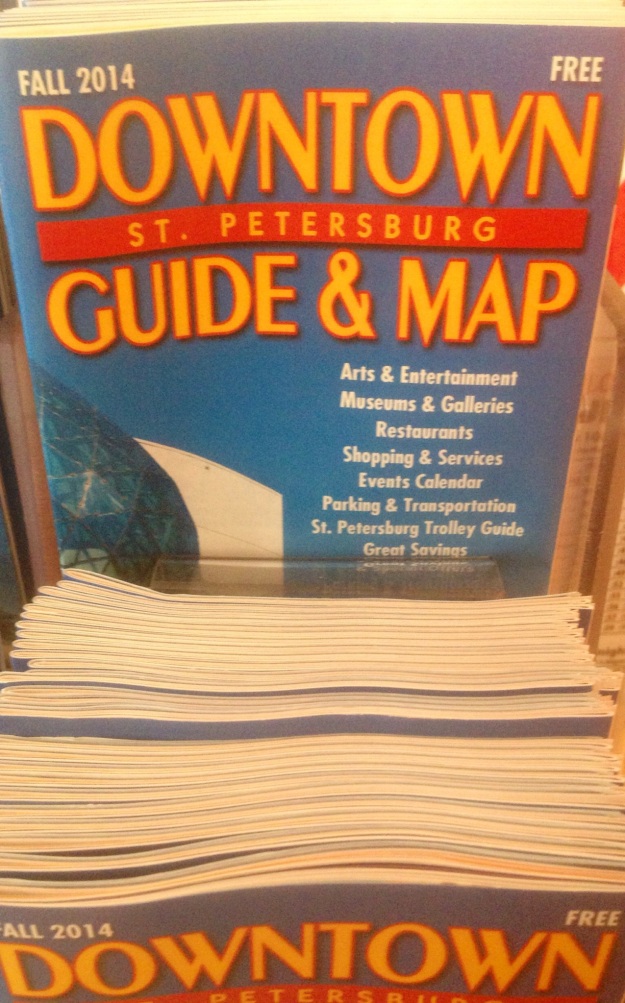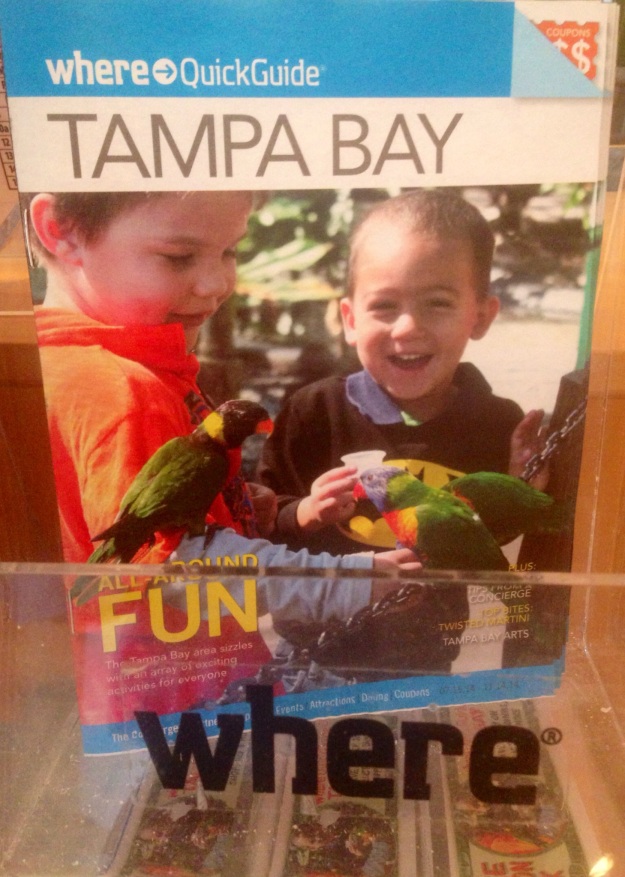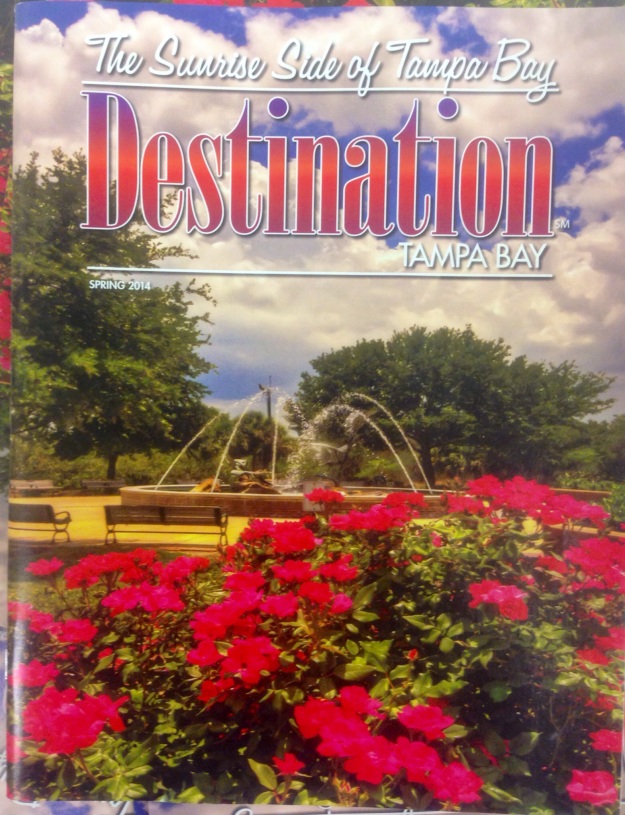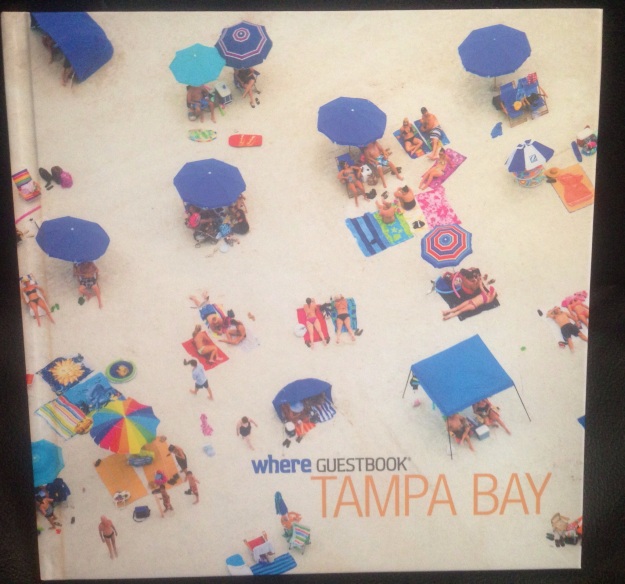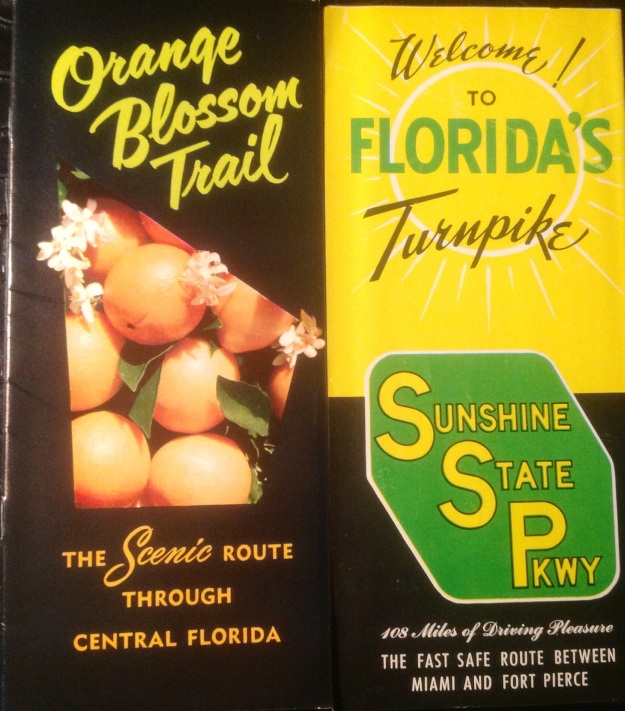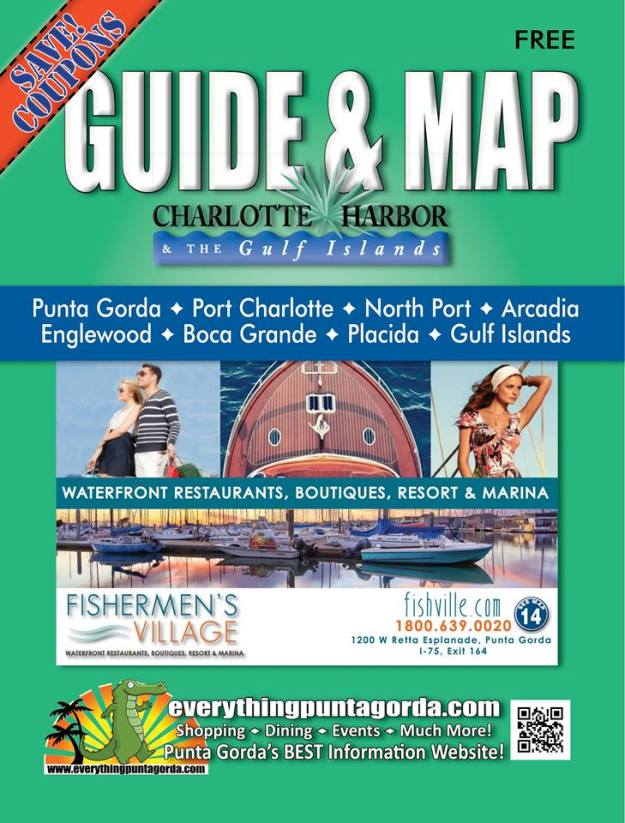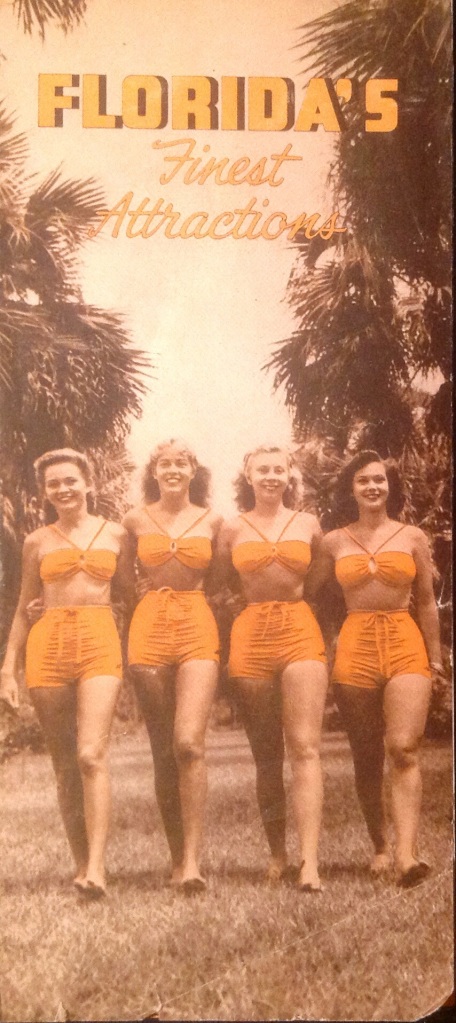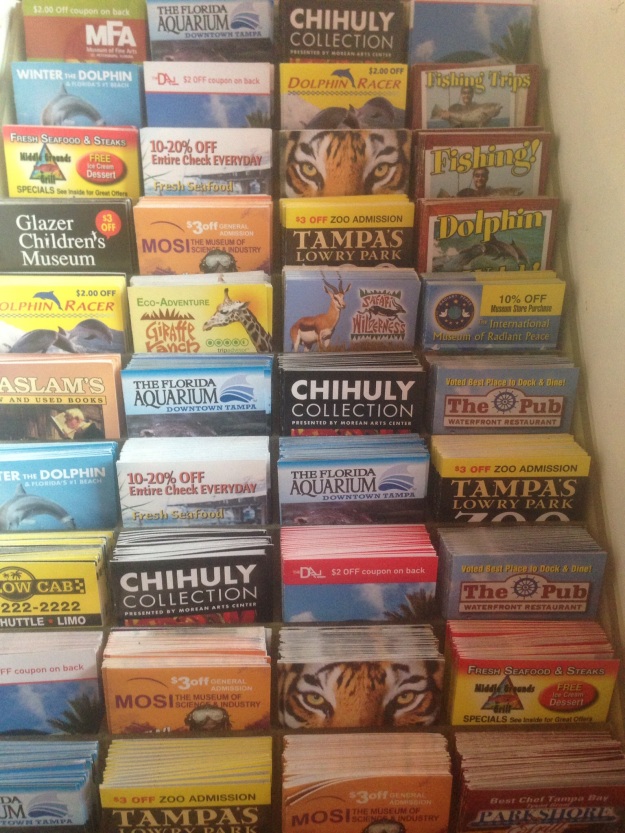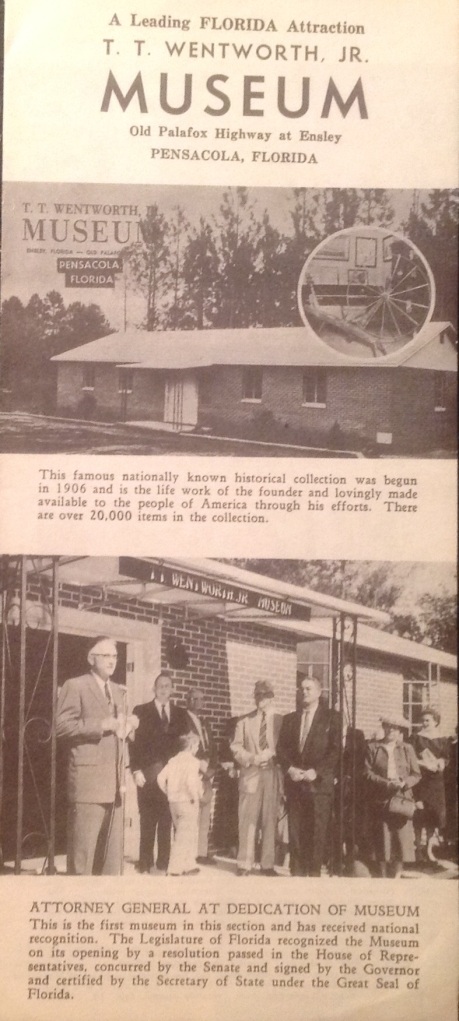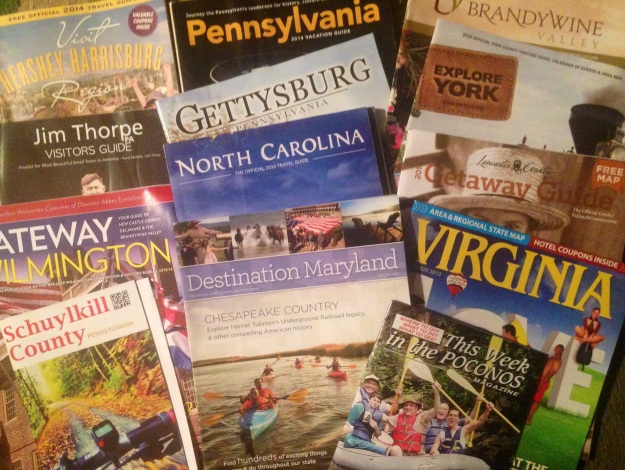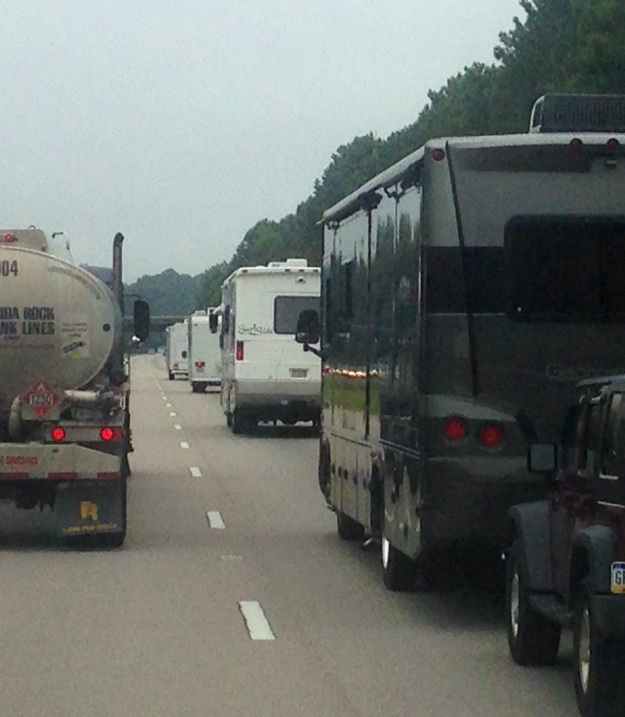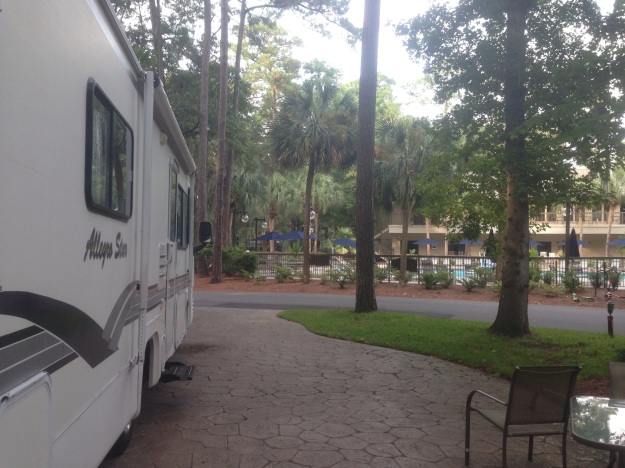10 Trends in Tourism Marketing for Destinations
Having been in the tourism industry for well over 25 years and having taught tourism marketing classes I find myself in a position to be able to identify and comment on trends in tourism marketing with the thought that it might help smaller attractions and in particular museum or other cultural attractions or even destinations. Staying ahead of the trends for planning purposes is the key to long term tourism success for a destination.
This blog entry takes this background and marries it to the fact that I have been planning road trips in our recently purchased RV and studying destinations and tourism marketing materials in the process. While there certainly are more trends than what is contained in this article, this is a start and is based on an in-depth examination of some random states’ visitors guides in the northeastern United States.
There are some common denominators in tourism marketing throughout the United States and some emerging, as well as established, trends that bear looking at. Let’s look at what is really for sale in some of America’s top tourist’s visitors guides (in no particular order):
1. Discovery – If you read destination visitor’s guides you would soon figure out that we humans enjoy discovery. And most people like discovering things that have been discovered before them and curated to the point that they know they, too, would enjoy discovering it despite the fact that it has been already discovered. The word “discover” appears often in tourism marketing. A lot of destinations promote themselves under the headline of “Discover (fill in the destination).” Everyone wants to be a Columbus but no one wants to discover something that isn’t worth discovering so it helps when the tourism product is curated or validated by someone or a group of people.

Discover Monadnock in New Hampshire invites you, along with many destinations, to “discover” it.
Hardly a state exists where you can’t find an image promoting it without it being paired with the word “discover,” whether it is discovering history or the arts or the entire state. This is probably more ubiquitous than it is a trend but it filtering down to a lot of other tourism product than just state-wide tourism promotion.
2. Experience – Everyone wants an experience. No one just wants to go somewhere. It isn’t enough that you have seen a destination anymore, you have to experience it (after you discover it, of course). Many destinations use “Experience (fill in the destination)” and this has been a growing trend following the “Visit (fill in the destination)” craze. From attractions and restaurants to hotels and entire destinations, visitors are encouraged to “experience” the tourism product. We have long since known that the experience, the intangible product, is actually what is being sold after all. It is only fairly recently that this is how destinations are marketing themselves.

Many destinations want you to “experience” them. This one for New Hampshire invites you in for just such an experience.
3. Fun – Who doesn’t want to have fun? No one. This could be also called Participate but the end result is still fun. Some destinations package a lot of fun experiences and position on fun. There are some destinations in New Jersey where the word is everywhere. And rightfully so, their tourism product is fun – from watching salt water taffy being made to arcade games on a boardwalk to jumping in the waves in the Ocean. There’s also water parks, amusement parks, gaming centers and more in these types of destinations. It also isn’t unusual to find a Ripley’s in these types of destinations and to find the destination marketing to families and using words such as tradition in their copy.
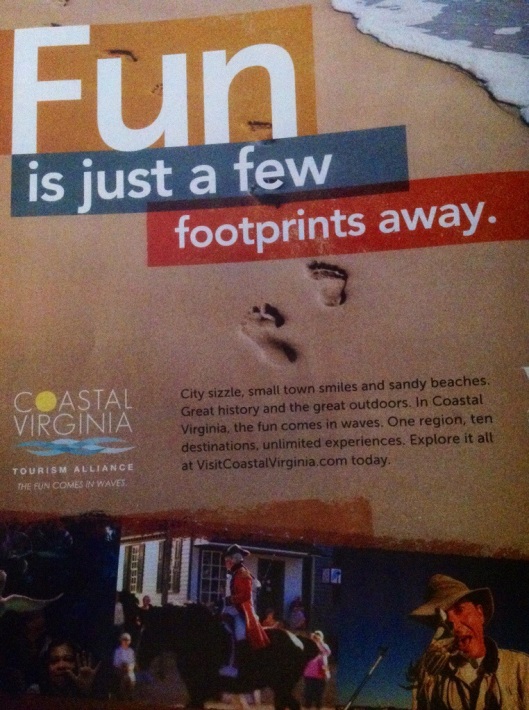
Coastal Virginia appears to be all about “fun” in this ad inviting you to have fun in only a few footsteps.
If your attraction or destination was so inclined you could, like others, simply say “Experience the Fun at … ” or “Discover the Fun at …” And, of course, it has been done and continues as a trend in state visitor guides.
3. Local – This speaks to the unique product that the tourist will consume – a local experience that can’t be experienced anywhere else. Every town now has shops, restaurants and other things that are unique. This local and authentic tourist experience is something that continues to grow in popularity. This could be something like a chocolatier, a craft beer brewery, a candle or soap shop, a local farmers market, or a strip of independently owned shops in a town center. While the old style urban renewal projects which were so popular years ago included things like The Gap or Ann Taylor and a national or regional restaurant anchor or two along with some shops selling kites, t-shirts and hats was once the thing visitors sought out, they have done those and are looking for a more local and authentic experience.
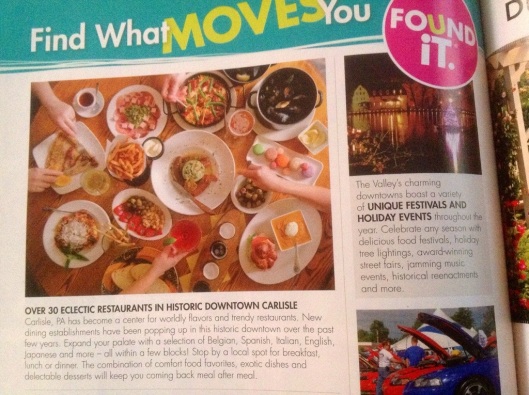
This editorial feature focuses on the thirty local restaurants in downtown Carlisle, Pennsylvania.
If you just search for images on the web under “shop local” or “buy local” you will find no shortage of graphics used in social media promoting the local movement. It has gained the greatest ground in places like Portland, Oregon, Ashville, N.C. and St. Petersburg, Florida. While it may have started as a movement to protect mom and pop shops, main streets, local farmers and artists, it serves as a terrific tool in promoting tourism. Few destinations promote their chain supermarket with produce from South America after all.
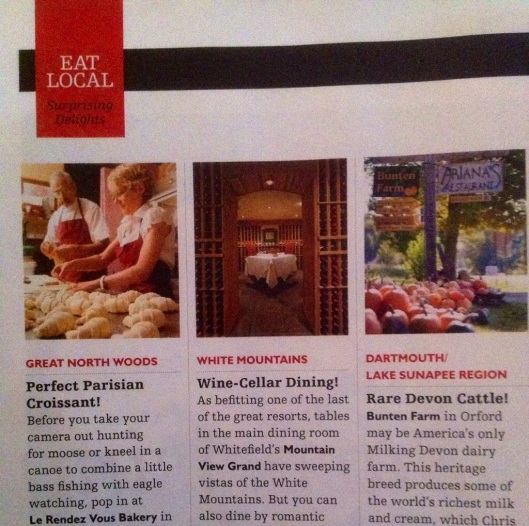
In New Hampshire, eating local is one of the features of tourism promotion.
4. Beer and Wine with Locality – There once was a time when most towns in the northeast had their own breweries. Over time, many of them closed. That trend has completely reversed itself. It now seems that there isn’t a destination that doesn’t have a craft beer maker or brewery in it with larger cities having entire trails of these breweries. Something that largely is credited to Portland, Oregon, now has become pretty mainstream and is still gaining momentum. Many destinations continue to promote the microbrews and the brewery experience to visitors.
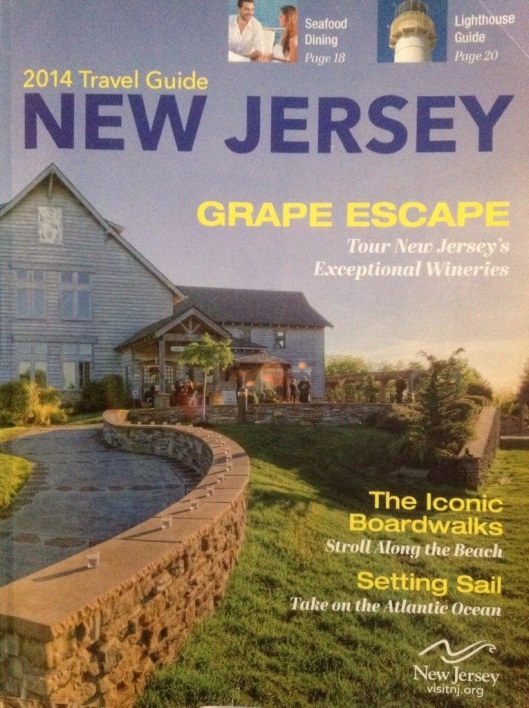
The cover of the New Jersey visitor’s guide focuses on wine with its Grape Escape headline.
Wineries have become equally popular starting in Napa Valley and now in destinations such as Pennsylvania and New Jersey. Even Florida has wineries. These all provide an authentic local experience and give the visitor something to buy to take back home that isn’t the tacky souvenir of days gone by.
At some point every town will have a craft beer brewery or a winery and these will diminish as a tourist draw as most tourism products have in the past but it will be some time before this happens. As soon as the market expects a destination to have a product, it becomes no longer as important to the tourism product mix. Most recently (in the past dozen or so years) IMAX theatres were once important to the tourism mix but are now not as significant in making a destination unique as they are in so many markets.
5. Outdoors – As people look for more experiential travel experiences, many destinations are including outdoor activities such as canoeing and kayaking as well as golf as part of their tourism mix. There are hiking and biking opportunities in many destinations that often get overlooked as part of the tourist experience. More and more destinations appear to be showing this as part of its nature package. Even destinations where the natural environment isn’t the most suited to outdoor activity can find something to attract visitors interested in the outdoors. And this is happening in even the most urbanized of destinations such as the High Line in New York City. This plays to the general trend toward better health globally and will continue to be a trend in tourism marketing.

This ad for Clarion, Pennsylvania not only is about experiencing the destination but it is focused on the outdoors and the destination being known as “River Country.”
6. Open All Year – Many destinations are known for a particular season. Ski resorts in particular have done a good job over the years of spreading out their tourists to year-round with a variety of tourism products such as historical towns, outdoor activities and more. Summer destinations, such as New Jersey or other states known for their beaches, promote year-round activities. The State of New York even has covers on its visitors guide to coincide with the season offering not only a wealth of summer activities but specialty seasonal tourism offerings as well.
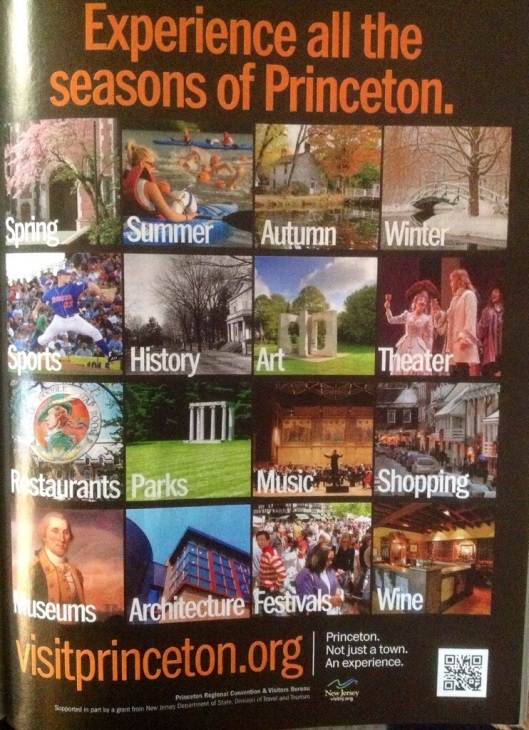
A very well done ad for Princeton, New Jersey makes it clear the destination is not just a single season destination.
A number of states use, or have used, the Four Seasons of Fun concept including New Hampshire, Utah and Wisconsin. There are variations on the theme, but destinations want consumers to know they are not just seasonal destinations anymore. Attractions in Florida have long focused on increasing visitors during typical off-season times such as Fall. This is why Epcot does the annual Food & Wine Festival and the Magic Kingdom, Universal Studios and Busch Gardens do a special Halloween event. With more tourism product, the state then has something more to offer the consumer.
7. More than Just What We’re Famous For – Many destinations are known for one thing or another for the most part. Take beach destinations, for example. It isn’t uncommon to see these promoted now as “more than just a beach.” Even Daytona Beach has a small historical downtown that is interesting and not something most people seek out. Therefore, the visitor “discovers” the small treasure.
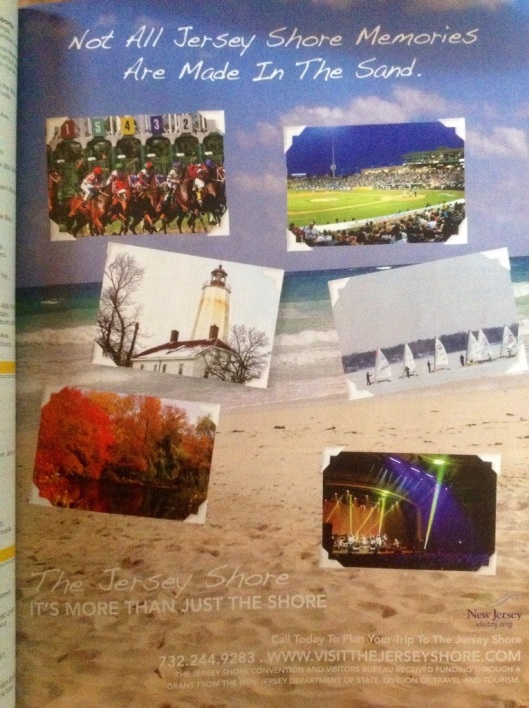
The Jersey Shore is naturally more than just the shore.
While being more than just a beach destination is becoming popular, so would becoming more than just a ski destination. And this would be true of major tourist attractions as well. No one goes to Niagara Falls and expects to do nothing but look at the falls. But all those other things do help entice someone who might think there isn’t anything else there.
8. Itineraries – So often visitors don’t have the time to do research for a road trip and are looking for something packaged up but yet provides a free and independent travel experience. The State of Maryland, among others, has a great booklet promoting its byways.
These are not very linear like some but it is comprehensive and gives you a good idea of what to experience along the way and based on your interests you can select your route. Some regions and states also focus on single routes – such as Route 66, the National Road, PA Route 6 or even the less heard of Pennsylvania Route 422 through four counties which is advertised as a coop in that state’s visitor’s guide.
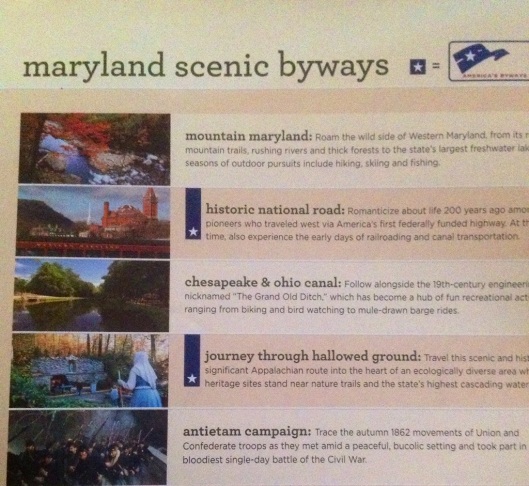
Maryland even publishes a separate guide for its scenic highways and byways with plenty of suggested itineraries.
This is something that isn’t terribly new. In Florida, many years ago, entire routes produced brochures for tourist racks on certain routes through the state and often destinations provided “one day trip” offers using the core destination as a base. The Orange Blossom Trail through Florida to points in the mid-west was a popular marketing tool in the mid 20th century.
9. Main Street – Often you will see America’s historic town centers promoted in tourism materials. The angles range and may include any or even all of the following: historical, cultural, food, local, shopping, ghosts or others. The national Main Street program has been successful in helping small towns not only survive but thrive and it has been successful in larger city’s neighborhoods as well.
These Main Streets are often unique, obviously local, usually not filled with chains you can find anywhere and often contain some element of arts and culture and frequently have local shops and restaurants to attract residents. Some states do a very good job of promoting these unique destinations. Virginia has a section on them in its visitors guide that is very well done.
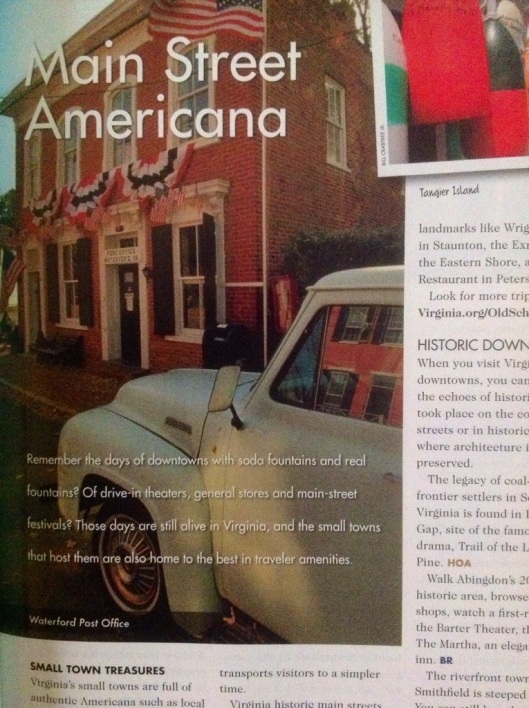
Virginia devotes editorial coverage to towns with historic main streets.
Even in places that you don’t think of for main street activities, we’ve found delightful and walkable main streets even if they aren’t as charming as most. The point is, they are different than any other and even in some small Texas towns we’ve found fascinating main streets in towns and usually a local restaurant or shop worth visiting if just while driving through.
10. Art – Once tourism and the arts strictly translated to museums and a passive visit to one of them to look at art. Museums became more experiential over the years and today it is rare that you enter a museum and passively observe art without some type of “experience.” Hands-on museums have become popular and art museums have incorporated more participatory elements in their exhibits and exhibitions.
Many towns in the U.S. have museums whether they are historical museums, historic houses, art museums, children’s museums, science museums or a zoo or aquarium. Destination marketers are now figuring out how to set their destinations apart from others. And often the fact that there is an art museum isn’t sufficient enough. It must be unique.
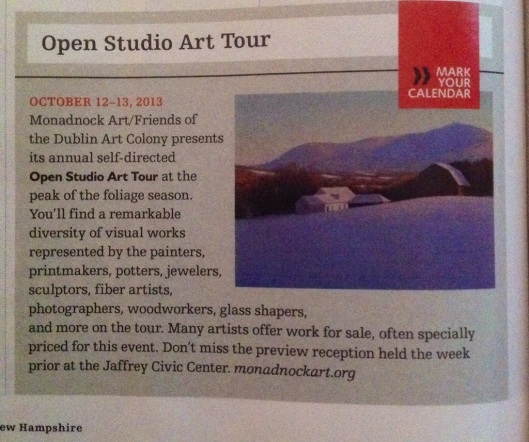
In the New Hampshire visitor’s guide, there are special arts-focused events such as this one that occurs just once a year.
Once again, my hometown of St. Petersburg serves as an example. The Salvador Dali Museum opened there in 1982 and is a unique asset to the tourism product. A collection of works by Dale Chihuly also opened in 2010 further providing a unique museum experience. But what is beginning to happen is that visitors are seeking out more experiential arts experiences such as touring a local pottery, visiting an artists collective gallery featuring works by local artists, seeing artist studios or participating in local art or gallery walks. They are seeking out more authentic local experiences. This is an up and coming trend that is just beginning to gain momentum in some destinations.

This is an incredible ad for Lancaster, Pennsylvania that actually appears in a county tourism guide, not the state guide, but it clearly shows off several trends including the arts and the local concept quite well.
What isn’t on this list might be a bit surprising. Professional sports are not mentioned often at all in tourism promotion by state agencies. You can draw your own conclusions to this observation.
What is bubbling up into the top ten?
Music and concerts. Some destinations have captured this market quite well – primarily in the Country and Western Belt though places like Seattle and Austin do quite well with it too. Most destinations don’t position on music and don’t have enough focus on indoor and outdoor music festivals and concerts because generally all there is to promote is the venue. The exceptions would be an annual festival – whether it is country, jazz, blues, or another genre that can be promoted year-round. But a lively music scene that exists year-round would be of interest to tourists.
Another trend that will bubble up is that of gastronomy. Though this is closely tied to the Local concept, it will become more and more important to a destination. More and more American towns and cities have developed restaurant/cafe districts that have very good restaurants – and there is the interest to experience local things which this goes well with especially if the town’s restaurant row is on the Main Street which is historic in nature.

Downtown Carlisle, Pennsylvania plays off the local and gastronomy trends mentioned in this editorial that makes anyone who is hungry for something unique want to visit it – and who isn’t looking for something like that?
Bike riding is another trend that will continue to rise as more bike rental opportunities or bike share programs come about. It fits mostly in the Outdoor section but is sufficiently important enough to stand on its own. This, combined with an increasingly friendly attitude by local governments regarding bicyclists in the form of bike lanes and trails will be another product that destinations will rely on to attract more visitors. Maine is one state that incorporates the biking attraction into its state tourism promotion.

The Mountain Creek Bike Park in Vernon, NJ is well positioned in the New Jersey guide and rightfully so.
Unique Festivals and Events is something that people are travelling for based on their particular interests. More and more of these are drawing greater numbers of visitors if the product is right and well-promoted. I’m not talking about a Santa Parade, though that does draw visitors from around a town, but something unusual that a visitor would have to travel to in order to experience it. The more unusual, the further away people would be willing to come from for it. Some examples of unusual festivals might include Tatoofest in Tampa, the Burning Man Festival in Nevada or the Bald is Beautiful Convention in North Carolina.
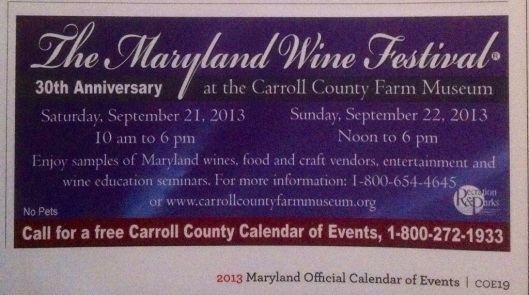
This ad for the Maryland Wine Festival is another example of how events are working to draw tourists for niche interests.
You can take these ideas and trends and apply them to your own destination marketing plans. If your “destination” is another attraction or perhaps a small historic town or even a district within a larger city, there are ideas here to help you on the branding and ultimately, the marketing, of your destination.
Before ending, there is one ad that stood out as possibly the worst ad in any of the state visitor’s guides that I reviewed. So much is wrong with it from the graphics to the fact that it is for a one-day event and is placed (in a full page) in an annual guide. In fact, it arrived long after the event was over.

Rutgers Day in New Jersey takes place on one day and yet occupies a full page in the annual New Jersey publication. My guess is that government dollars funded the ad and somewhere there is an intern who designed it.
So there you have it. Ten trends in tourism destination marketing from one person’s observations. Perhaps this information can help you with your attraction or museum. I’ve been to so many small towns in America that are just gems of destinations that I never knew about until visiting them. Hopefully some of them can become more tourism oriented to help their local economies. Some of these towns that I’ve traveled through, I wished that I could have stopped and talked to someone about how to make them more tourist friendly or how to package them to create a more interesting story to entice tourists to visit. This is my way of stopping and trying to help. Thank you for reading this far and hope it was helpful or at least somewhat interesting.
